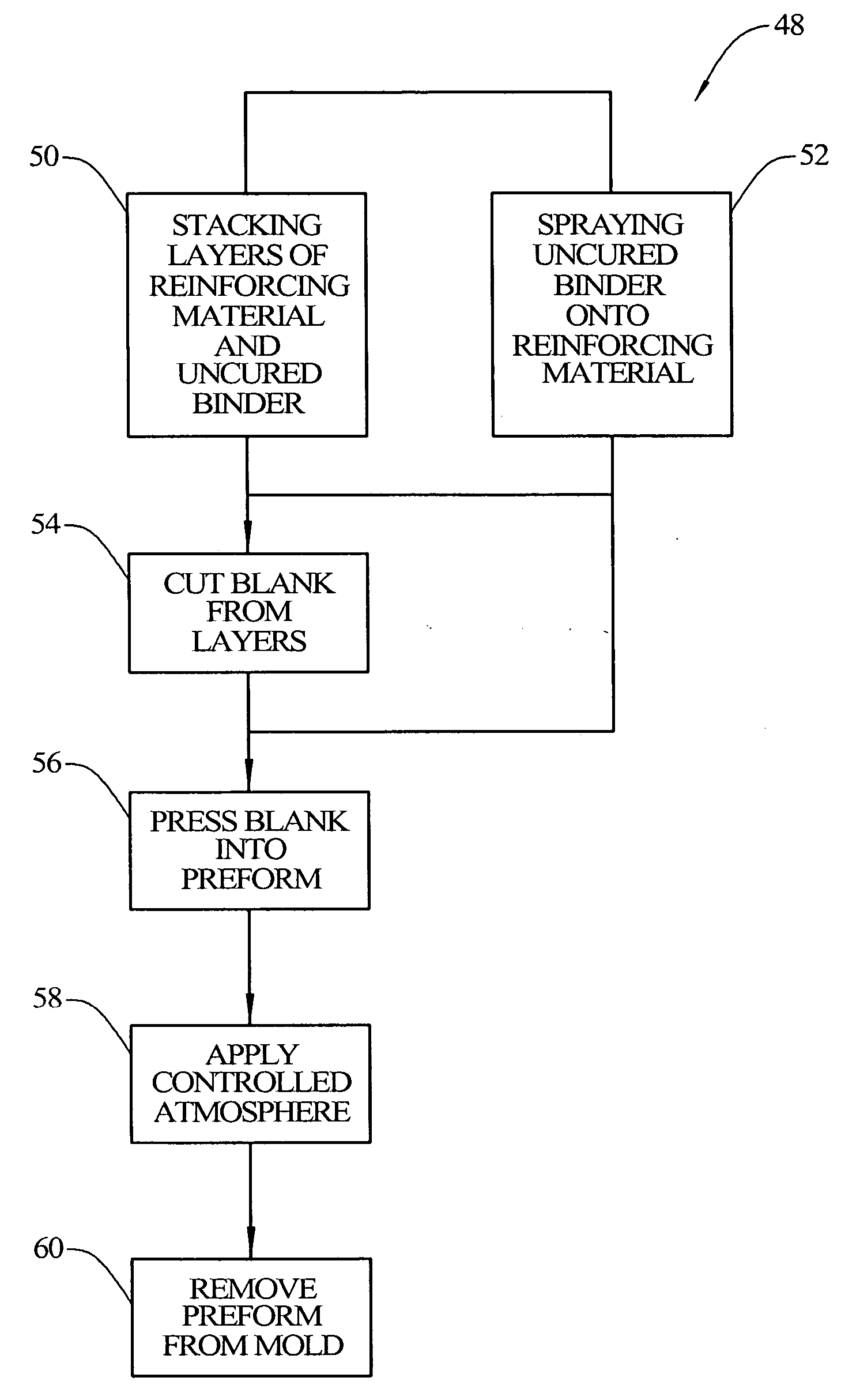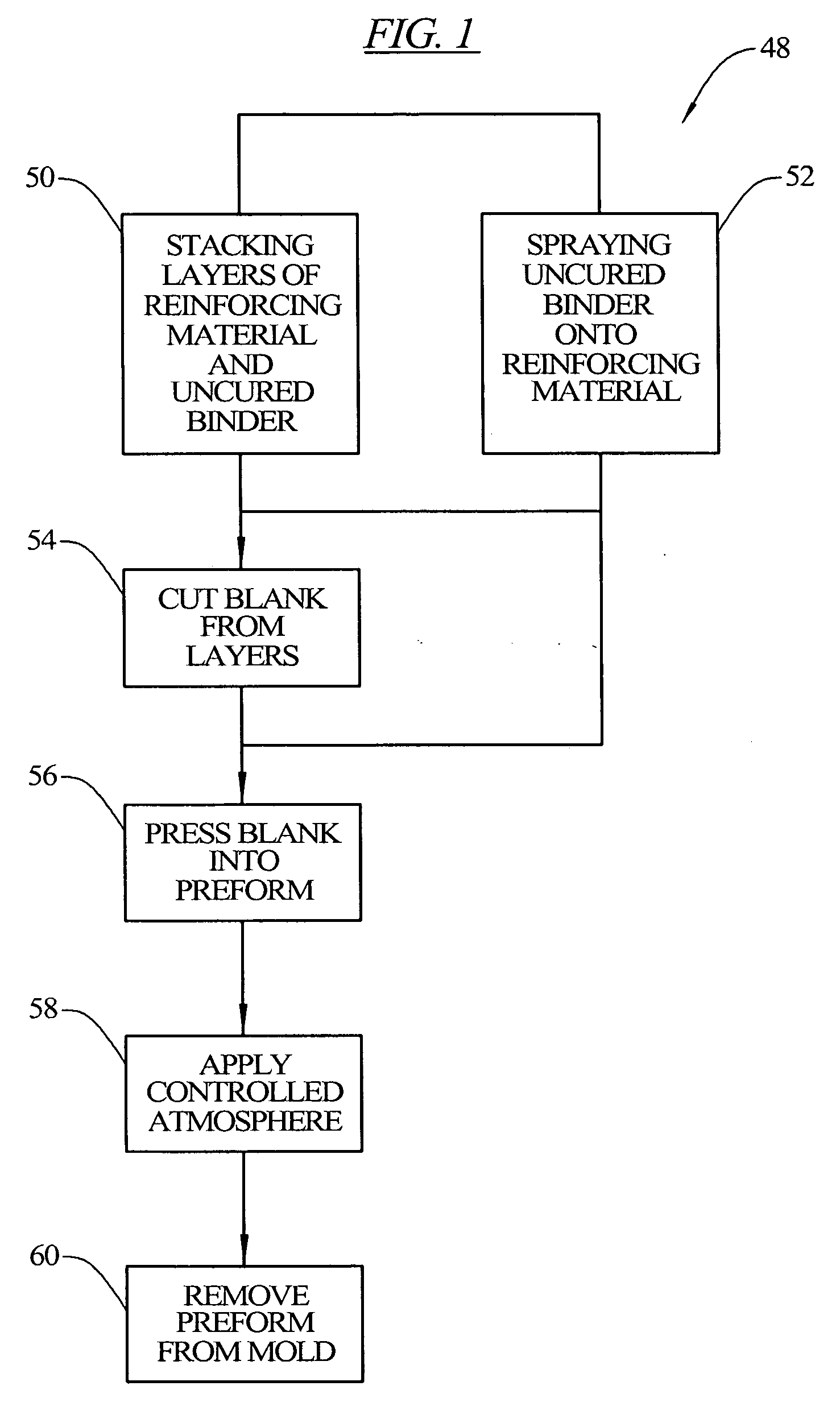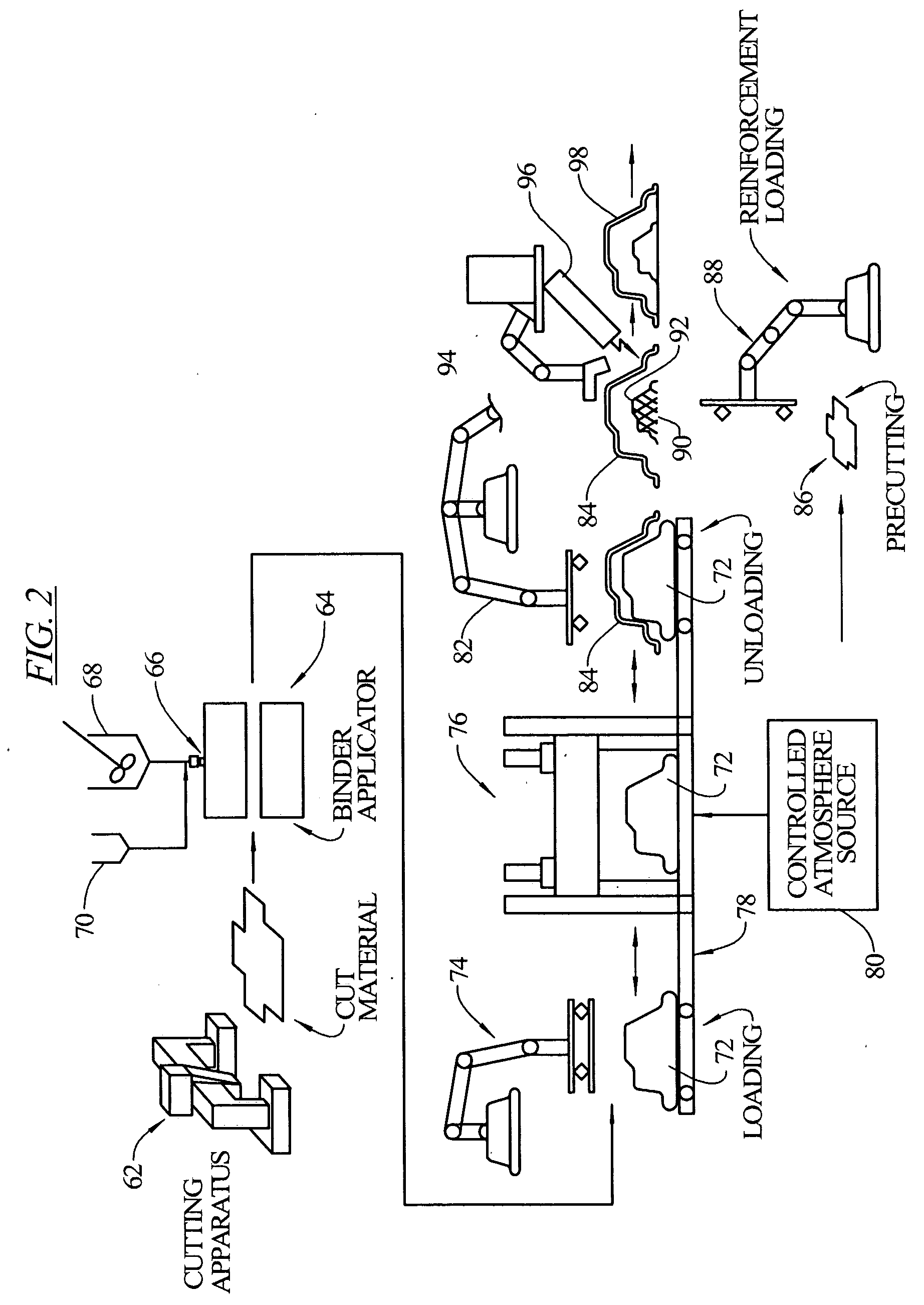Method for making three-dimensional preforms using anaerobic binders
a three-dimensional preform and anaerobic technology, applied in the field of methods, can solve the problems of limiting the application of techniques, affecting the curing process, and affecting the curing effect so as to promote the curing of the curing process
- Summary
- Abstract
- Description
- Claims
- Application Information
AI Technical Summary
Benefits of technology
Problems solved by technology
Method used
Image
Examples
Embodiment Construction
[0038] The present teachings provide new methods for manufacturing preforms, wherein the binder resin is an anaerobic binder. With these anaerobic methods preforms can be produced to any thickness where light curing would have to be used in several steps, or where light curing would not work such as with carbon fibers and with any medium that blocks light such as certain types of core materials. Since anaerobic curing is not directional, the materials, with the binder in place, can be assembled in the desired organization (laminate schedule) to any thickness and the preform is stabilized by applying an atmosphere promoting the curing of the anaerobic binder.
[0039] For example, a preform can now be produced in one step with combinations of many layers of carbon fiber, glass fibers, core materials, and metal inserts where the carbon, core materials and metal inserts would block the application of light, thus requiring more than one light-curing step, and where these materials would a...
PUM
| Property | Measurement | Unit |
|---|---|---|
| Fraction | aaaaa | aaaaa |
| Fraction | aaaaa | aaaaa |
| Percent by mass | aaaaa | aaaaa |
Abstract
Description
Claims
Application Information
 Login to View More
Login to View More - R&D
- Intellectual Property
- Life Sciences
- Materials
- Tech Scout
- Unparalleled Data Quality
- Higher Quality Content
- 60% Fewer Hallucinations
Browse by: Latest US Patents, China's latest patents, Technical Efficacy Thesaurus, Application Domain, Technology Topic, Popular Technical Reports.
© 2025 PatSnap. All rights reserved.Legal|Privacy policy|Modern Slavery Act Transparency Statement|Sitemap|About US| Contact US: help@patsnap.com



